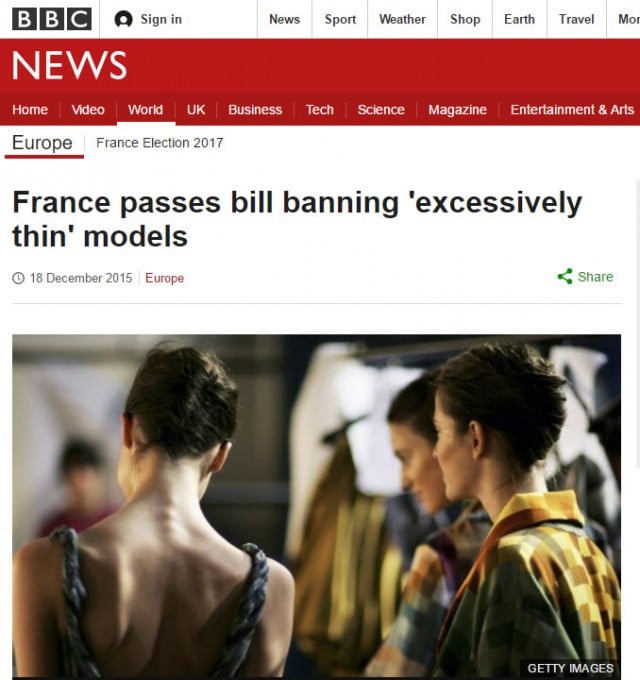In December 2015 a change of law in France made headlines around the world.

In a bid to fight against anorexia the government introduced two articles in its health bill, both of which won the backing of MPs.
Firstly ultra-thin models in France would need a doctor's certificate proving they are healthy before they are allowed to take part in fashion shows.
The bill stipulates that models must obtain a medical certificate stating that their health, “assessed in particular in terms of body mass index, is compatible with the practise of the (modelling) profession”.
Breaches of the law would be punishable by up to six months imprisonment and a fine of €75,000 ($80,500).
The lawmakers also included an article that forced magazines and websites that alter images of models to “make the silhouette narrower or wider” to be labelled retouchée (touched up).
An earlier draft of the bill had caused howls of protest in the fashion industry by proposing that a minimum body mass index (a measure of body fat based on height and weight) be imposed for models.
In the end parliamentarians agreed to let doctors make the call on whether a model is too thin, taking into account a range of criteria, including age, gender and body shape.
But once the headlines had been written, shared and digested and the law welcomed by those organisations involved in tackling eating disorders, it all went quiet.
And over a year later, no model has been forced to present a doctor’s certificate and anorexia, which has a high mortality rate, continues to impact on between 30,000 to 40,000, mostly young people, in France.
The decrees have still not been published in France’s Journal Officiel, where all new laws must be published when they go live.
The delay is worrying the man behind the bill, Oliver Véran, who said the laws have been blocked for “technocratic reasons”.
“I deplore it,” he told Europe 1 radio.
“I do not want to see this law passed but never enforced,” said Véran. “If the delay goes on, the decrees will never be published by the end [of François Hollande’s presidency].”
According to France’s ministry of health the delay appears to be due to the fact that the two articles still need to be passed through the European Commission, France’s state council (Conseil d’Etat) the ministries of labour and health and a body called the Council of Orientation of the Conditions of Work (COCT).
Véran is optimistic they may finally come into force in the spring, but with presidential and legislative elections in May and June, time is running out for France to make that statement.




 Please whitelist us to continue reading.
Please whitelist us to continue reading.
Member comments